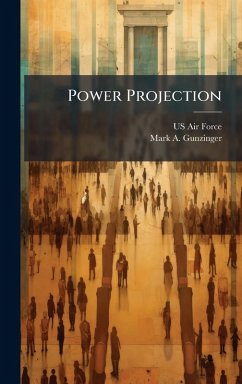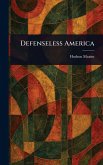This study concludes airpower will play an increasingly dominant role in future US contingency responses. Power projection is defined as the finite application of military power by national command authority to achieve discrete political ends outside the borders of the United States, its territories, and possessions. Power projection contingencies are characterized as wars and operations short of war, but not conflicts that are global or total in nature. Future contingencies that demand a US response may occur without warning, be time sensitive, and require short duration deployments. US forces may not have immediate access to or a previously established presence in potential theaters of operation. Due to the changing nature of the international environment and domestic priorities, the President defined a new National Security Strategy that emphasizes projecting military forces in response to regional conflicts. The military services are currently modifying their doctrine and force structures to reflect the shift towards power projection. The services agree power projection forces must be lethal, flexible, deployable, mobile, and capable of surviving an increasingly hostile threat environment. Comparing force characteristics reveals airpower has greater flexibility, deployability, mobility, and is better able to survive future threat environments than surface forces. New domestic imperatives have also forced the services to engage in a healthy competition to preserve their share of a shrinking defense budget. In terms of efficiency, apportioning resources according to an arcane formula that does not reflect force capabilities or the future utility of primary service functions is illogical. Building a strong power projection capability requires a thorough evaluation of the relative efficacy of air, land, and sea power to perform the power projection mission. This evaluation concludes airpower has a great potential to achieve national security objectives decisively i This work has been selected by scholars as being culturally important, and is part of the knowledge base of civilization as we know it. This work was reproduced from the original artifact, and remains as true to the original work as possible. Therefore, you will see the original copyright references, library stamps (as most of these works have been housed in our most important libraries around the world), and other notations in the work. This work is in the public domain in the United States of America, and possibly other nations. Within the United States, you may freely copy and distribute this work, as no entity (individual or corporate) has a copyright on the body of the work. As a reproduction of a historical artifact, this work may contain missing or blurred pages, poor pictures, errant marks, etc. Scholars believe, and we concur, that this work is important enough to be preserved, reproduced, and made generally available to the public. We appreciate your support of the preservation process, and thank you for being an important part of keeping this knowledge alive and relevant.
Bitte wählen Sie Ihr Anliegen aus.
Rechnungen
Retourenschein anfordern
Bestellstatus
Storno








